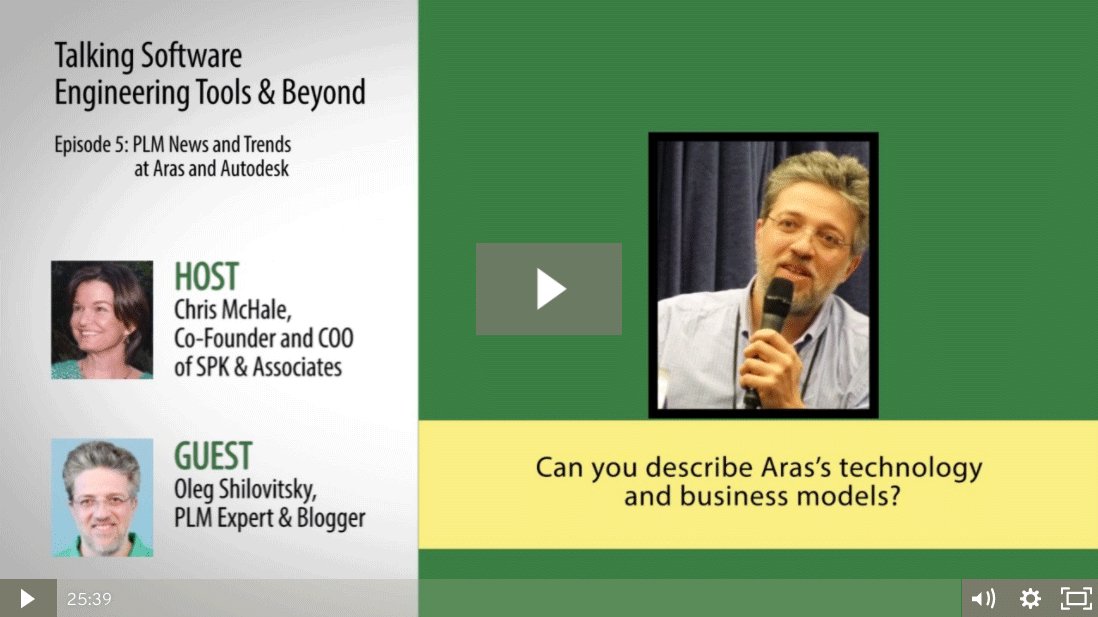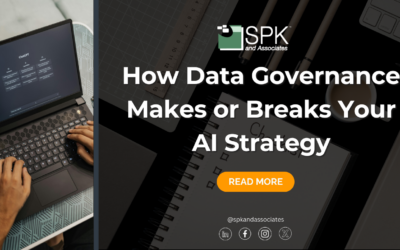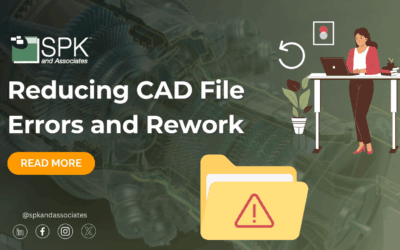Last month, SPK and Associates co-founder Chris McHale spoke with PLM expert Oleg Shilovitsky on the difficulty of BOMs across engineering disciplines. In part two of the discussion, they focus in on the difficulty of BOMs across the product life cycle. This is Chris and Oleg’s third episode of “Talking Beyond PLM” complete with transcript.
Chris: Hi this is Chris McHale. I’m co-founder and COO of SPK and associates, which a technology services company dedicated to accelerating product development in manufacturing companies. I’m here with Oleg Shilovitsky who is a well known blogger on product life cycle management topics for over the last five years. Oleg and I are presently producing a podcast once a month, where we dive deeper into one of his key topics from his recent blogging post.
So Oleg would you take a moment to introduce yourself?
Oleg: Sure, sure. Hi everybody my name is Oleg Shilovitsky. I am consulting on PLM and I’m also blogging about different topics related to PLM on my blog BeyondPLM.com.
Chris: Okay, great. So in our last session Oleg, you and I talked about the challenging topic of BOM management for, it’s a simplistic term for what actually is, but we started talking about the challenges of managing Bill of Materials or BOM. We focused first on a cross of engineering discipline. So managing a BOM across the engineering disciplines as mechanical, Double E, and even software. And this week, at the session what we’d like to do is switch gears a little bit and talk about the management of the BOM across the enterprise or the life cycle of the product starting with engineering, moving over into manufacturing then also into service, support or maintenance of the product which is getting more and more attention these days. So since that’s the overall topic I thought we would actually start, I’d like to ask you for your definitions of first of all what is a BOM, but more particularly what is an engineering BOM say versus a manufacturing BOM since people often turn ease those terms, and versus perhaps what the BOM must look like for the maintenance or service part of the product life cycle. So could you just give us your overview of that? That would be very helpful.
Oleg: Sure of course. Again, it’s clear to everybody that a Bill of Material is the centerpiece of everything which is going in the product development manufacturing and later with the product or the services. And you can hear very often that people are using different terms to call different Bill of Material. And there’s really no certain standard names for every Bill of Material, and you can find all different type of names that people are use from e-BOM, m-BOM, x-BOM, a-BOM, t-BOM, whatever you want. What is, in my view, important to distinguish is the two main groups of Bill of Materials and one is the information that you maintain in the engineering, in the development, and this is normally the information that you have from your design environment and information that’s related to different aspects of engineering.
We’ve been talking last time about different domains like mechanical electronic software, so you can think about all of them together. And they combine engineering Bill of Material and also they might include some elements that are not necessarily presented in the design system. But all together, they will represent the engineering Bill of Material for the product. On the other side, as you go to produce a product, to manufacture a product, you can often see different perspective on the product and this is manufacturing Bill of Material, which might be also different – depends on the way you manufacture and depends on the way you do production, but that would be a view on the product structure and a view on the Bill of Material as it goes with your manufacturing systems. So these are two important . . .
Chris: Would you give us a quick example, if it’s possible for those who are learning about this. What’s an example of a difference you might see between an engineering or design BOM, versus what you would see in a manufacturing BOM?
Oleg: Sure, the simplest example is that the Bill of Material engineering you can think about is product structure coming from design or CAD system system, which we’ll add some particular and non-geometrical parts to this Bill of Material. Like you can see the assembly combined together with some information about data that is not on the assembly, like you can think about Google, you can think about some picture. And in addition to that, you can add to this some electronic parts. So altogether you can get an engineering Bill of Material. What is important that this elements, this parts together mostly to even by the way a product is designed. If you have an assembly part structure this Bill of Material will be driven by assembly part structure. So that’s more engineering you on what is the product, so you will see the product is combined of assemblies, job assemblies parts – some other like if you’ve been talking about electronics, so it can be some mechanical parts of assembly, it can be electronics bolts. So it will be combined as the product is actually assembled by design.
On the other side if you go to manufacturing, this Bill of Materials mostly reflecting the way product will be manufactured, and it’s related to your manufacturing assembly lines, it’s related to . . . the structure will be actually different, because the structure will reflect the way product is assembled. And they will still represent the same product, but one will be view of engineers working on this product and designing this product, and another view will be related to people on the shop floor that are working on the assembly and combining these parts together to make the actual physical product.
Chris: Okay. That’s actually very helpful. And then if you continue down the path you’re going, once that product is manufactured and released and out the door, what sort of Bill of Materials or product definition would be required by the people out in the field, that have to maintain or support the product?
Oleg: Yeah, that’s another great question. I think because it depends on the industry and depends on the product, you might see a different Bill of Material outside. Let me give you a simple example. Like for the product that will be manufactured with a particular serial number, you will have to keep what’s so called serial number BOM for a particular product or particular instance of the product. If you can think about aircraft, this usually manufactured with the serial numbers and you are able to track all product configuration for a particular aircraft with the serial numbers and all information that belonging to this particular serial number.
For different type of manufacturing that manufacturers in large volumes, you can . . . This is an example. You’ll be able to see something different which would be called log numbers, and it will reflect batches of manufacturing. So these are the different ways to represent what you call the s-build Bill of Material. What is important to understand that this s-build Bill of Material, will reflect how actually product is built and how actually this product was shipped by the manufacturer. You can ask me, “What’s the difference between s-manufacturing and s-build?” And this actually would be very good to differentiate between them, because the differentiation will reflect, for example parts, that will go in the product because of actual production situation. Like you can go to alternate parts and you can go to some substitutes, because of some manufacturing situation.
Chris: So in a way, the BOM or the s-build BOM that the service or field needs – first of all it’s keyed on a view of a serial number or a sequence of serial numbers, right? But then, besides providing you it provides that person, that technician, with all the parts that were put into that particular product and alternative parts that might be used for repair, for example, is that sort of thing?
Oleg: Yes, that’s a very good example. So, basically, once you do have product sheet [SP] for the service purposes, a manufacturer will have to release information about maintenance. And this Bill of Material in maintenance is a little bit different representation of the same product. Not all information that is going in the s-build Bill of Material or manufacturing Bill of Material is going over there to the maintenance Bill of Material, because logistically, a manufacturer will release all the information that’s relevant for technicians and is relevant for maintenance people. So that’s just another view to look on this and differentiate between s-build and s-maintain Bill of Material.
Chris: Okay, that’s actually very helpful. I think that will help our audience to distinguish between the various views of the Bill of Material.
So now the $64,000 question, as they say is, what system or set of systems, or how does the manufacturing enterprise actually manage this Bill of Materials from design all the way over into service? Is there one system, from your perspective that can or should do that, or is there something that should be managed by different systems depending on the area of the business and is there a good way of finding an integration between those? Is there a good way of doing this at present, or is this something that we’re going to be seeing more in the future?
Oleg: Of course this is the simple hands to excel. Oh, just kidding, sorry [laughter].
Chris: Right, it’s the answer for everything.
Oleg: Yes, it’s actually really good question, because you can look on this not from the perspective of the product, but you can look on this from the perspective of the organization.
Chris: That’s right.
Oleg: That’s where the complexity starts. Because you remember we’ve been talking about engineering, development, manufacturing, support, sales, maintenance, and all these different domains. It’s actually different departments. Now this is where complexity starts, because the departments in the large manufacturing companies are separate. So they have their own rules, they manage information, and they very often use their own systems. So, historically these departments will be running different software like PLM, ERP, CRM, SCM, etc.
Chris: As you point it out they actually have different needs.
Oleg: Yes. And they have different needs, because they have different priorities and different things to solve. Like it comes from the inventory management and manufacturing. And it starts its way time ago with the MRP systems. And, obviously, it started with the design systems and with the engineering in different design systems. So historically, they have a lot of different software, they have a lot of different pieces of information. And then different manufacturing type of manufacturing put their own requirements. Like if you have mass productions system, it will be one type of requirement and one type of manufacturing need. But if you will go to engineering to order, or bill to order, you might have different requirements and different ways to inter-connect data pieces. So this is really complex question about how to manage it all together, and it’s usually done by multiple systems for large manufacturing companies with additional services that integrate these data silos and BoMs together. And essentially, they do a lot of synchronization between Bill of Material, in order to bring this information in a consistent view.
Chris: And so, finally, Oleg, as a final note to all of this. With some of the smaller companies that are growing up these days in situations where they’re outsourcing a fair amount of their, whether it’s manufacturing or even perhaps post release service and support, where they are not huge manufacturing enterprises but they’re smaller, but they still have the same needs. Are there good answers for those companies today, or are they more or less gluing together a lot of point tools in order to achieve the same result?
Oleg: I think for smaller companies the situation is not different from large companies, because of the same problem which we discussed the last time about complexity of products. So smaller companies they have, essentially, also complex products that are coming to be complicated to the material requirements. So for them it’s sometimes even more complicated because they need to maintain Bill of Material and maintain coordination between different companies, like contract manufacturing companies and firm supplies. So where the large manufacturing company can rule the way they work between departments, and practices and managing different Bill of Material, for smaller companies it actually an additional level of complexity is the coordination between different companies, which makes it even more complex.
Chris: Right. So in a way they possibly might have it even harder although they tend to be more flexible and agile in terms of how they can change processes and move, but they don’t have the same tools at their disposal, if you will. Is that the case?
Oleg: Yes, that’s exactly the case.
Chris: Right. Well, thanks very much Oleg. We really appreciate your time today and sharing with us some of your wisdom and background and experience in this area, and we look forward to our next session.
Oleg: Okay, thank you very much for inviting me. Look forward to the next podcast. Thank you.
Chris: Thanks Oleg.







